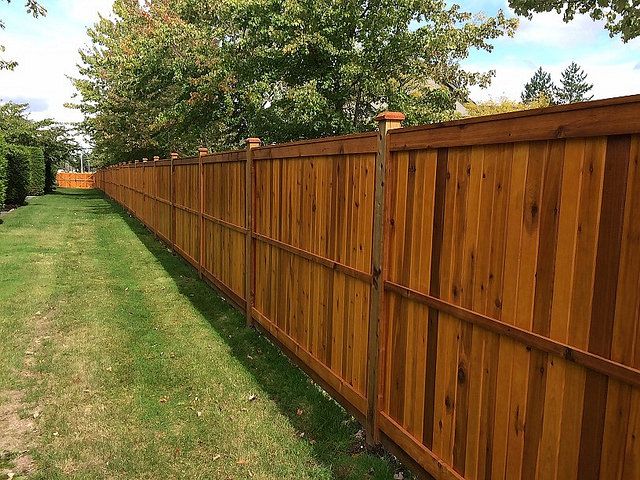Fence Staining: Boost the Beauty and Durability of Your Fence!
Fence Staining: Boost the Beauty and Durability of Your Fence!
Blog Article
Just How to Select the Right Fencing Stain for Your Building
When it pertains to boosting the look and longevity of your residential or commercial property's fencing, choosing the right stain is an essential choice that requires cautious factor to consider. With a myriad of choices readily available out there, each accommodating various timber kinds, shades, and openness degrees, the process can promptly become overwhelming. Nevertheless, making an educated option can considerably influence the overall looks and durability of your fence. So, just how can you make sure that you select the best fence tarnish that lines up with your residential property's design and upkeep requirements? Let's discover some key elements to lead you in this decision-making process.
Recognizing Wood Types
To choose the appropriate fencing tarnish, it is essential to have an extensive understanding of the various kinds of timber generally used for fencing. When picking a fencing stain, it is vital to consider the kind of wood being used to make sure compatibility and ideal defense. Understanding the characteristics of different wood kinds will aid you make a notified choice when it comes to picking the best fencing tarnish for your residential property.
Selecting the Right Shade
Picking an appropriate tone for your fencing stain is an essential choice that dramatically affects the overall visual appeal of your building. The shade you select ought to match the design of your home, mix sympathetically with the surroundings, and mirror your personal taste. When determining on a shade, think about the existing shade palette of your property. For an all-natural look, earthy tones like browns, eco-friendlies, or grays work well. These colors can help the fencing mix right into the landscape and develop a cohesive look. If you favor a more modern or bold look, consider going with darker shades like black or deep charcoal for a striking contrast. Lighter colors such as whites or light grays can make a fence show up bigger and include a touch of beauty to your property. Eventually, the right shade choice will improve the charm of your fencing and elevate the general aesthetic appeal of your home.

Considering Transparency Levels
When picking the best color for your fence stain, another crucial facet to take into consideration is the degree of openness that will best match your property's aesthetic and maintenance requirements. Openness degrees in fencing discolorations generally come under 3 groups: clear, semi-transparent, and solid. Transparent spots allow the all-natural appeal of the timber to reveal through while supplying very little security against the components. They are excellent for new or well-kept fences where showcasing the timber grain is a concern. Semi-transparent stains offer an equilibrium in between shade improvement and defense, allowing some wood grain to be noticeable while giving moderate protecting from UV rays and dampness. Solid discolorations, on the other hand, give the most security as they entirely cover the timber with a nontransparent finish. These are appropriate for older fences or those in requirement of significant security or color change. Take into consideration the degree of exposure your fence deals with, the desired maintenance frequency, and the visual you wish to achieve when choosing the right transparency level for your fencing stain.
Evaluating Maintenance Requirements
Taking into consideration the long life and maintenance of your fencing, assessing the upkeep requirements is essential in establishing one of the most suitable fencing stain for your residential property. The degree of upkeep required for your fencing can differ depending on elements such as the sort of timber, weather problems in your location, and your personal choices.
When evaluating upkeep needs, it is important to consider the toughness of the fencing tarnish. Some discolorations need even more frequent reapplication than others, so picking a stain with a longer lifespan can help in reducing the general maintenance demands of your fencing (Fence Staining Service). Additionally, aspects such as resistance to UV rays, water, and mildew can influence just how usually you need to re-stain your fencing

Testing Samples Prior To Application
Before using any kind of fence stain, it is a good idea to carry out example tests to ensure compatibility with the timber and desired visual outcome. Checking examples enables you to analyze how the stain will interact with the specific kind of timber made use of in your fencing, as various timbers can soak up stains in different ways. To begin, pick a tiny inconspicuous area of the fencing to use the stain samples.
Verdict
In conclusion, selecting the appropriate fencing tarnish for your property entails recognizing the timber type, picking the best shade, taking into consideration transparency levels, assessing maintenance needs, and screening examples prior to application (Fence Staining Service). By taking these factors right into consideration, you can ensure that your fence stain matches your property while giving the needed defense and sturdiness. Make an informed decision to boost the appearance and longevity of your fencing
Report this page